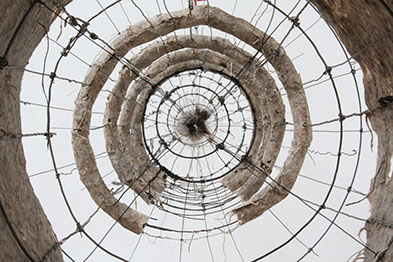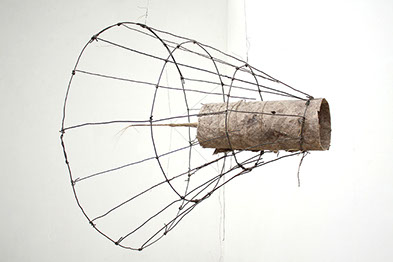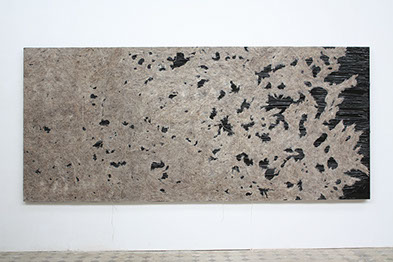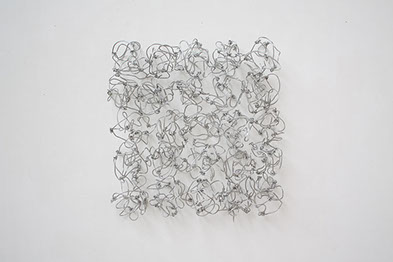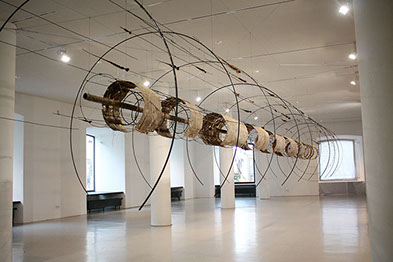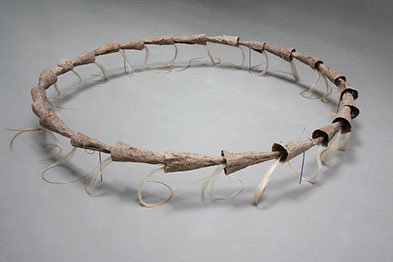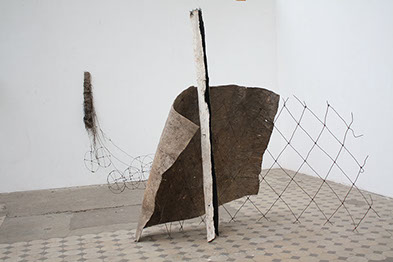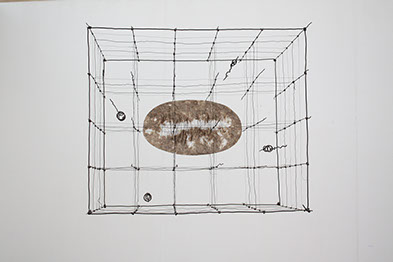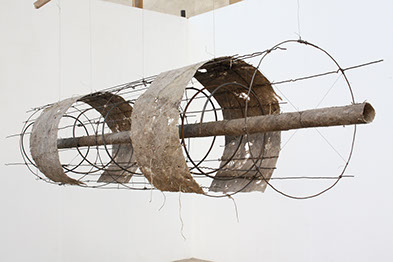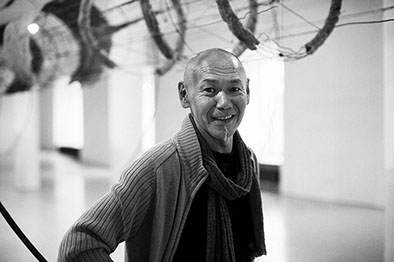Classic Sculpture, Object Art, Installation?
Unen Enkh’s work concept | by Franz Armin Morat
Among all human artistic modes of expression, sculpture is by far the oldest. As recently as May this year, what is probably the oldest artwork made by human hand, namely a 40,000 year old ivory representation of the female body, was discovered west of Ulm in the eastern part of the Swabian Alb hills. Portrayals of animals of a similar age were found in the same area a few years ago. What is astonishing, however, is not the age but rather the fact that during almost the entire period, sculptures were restricted to representations of animals and people only. It was not until the early 20th century that the sculptors expanded their repertoire of motifs at a virtually explosive rate.
In terms of his selection of virtually archaic materials (Mongolian felt with different degrees of hardness resulting from the addition of synthetic resin, heavy iron wire, occasionally with horsehair and hemp cords) Unen Enkh is a sculptor in the classic sense. And he is most certainly an avant-garde artist in the way he brings humor and irony to bear when, for example, he makes use of close meshed steel wire to deny access to a building that resembles a yurt; or when he seems to suspend the law of gravity by making the attachment of a wire sculpture »invisible«. the effect of his three-dimensional »drawings in space« made of iron wire is as astounding as it is impressive — the result is an alternation between genres. Neither does the long obsolete differentiation of the abstract from the representational help us classify Unen Enkh’s work. For he creates both representational and abstract sculptures and, most importantly, every »intermediate form«.
What about the question of installation art?
Positioning a large sculpture in a space is inevitably already an installation per se. In a narrower sense of the term however, I do not consider its use in reference to Unen Enkh’s sculptures appropriate, because their form itself is not affected when presented in a different way in different spaces. Not least Unen Enkh’s own photographs of his exhibition, abundantly documented in this catalog, show just how blurred the boundaries are.
In conclusion, suffice it to say that all of Unen Enkh’s sculptures are individual pieces of work in the classic sense of the term, which does not at all impair his enormous imaginative diversity. In this respect, as a traditional sculptor Unen Enkh acts in the realm of avant-garde art by creating incredible diversity.

UNEN ENKH
Atelier im E-WERK
Bildhauerhalle
Eschholzstraße 77
79106 Freiburg
Germany
+49–176–25651739
unen@enkh.de
PHOTOGRAPHY
Unen Enkh
Bernd Schumacher
Wolfgang Wick
FILM & VIDEO
Unen Enkh
Bernd Schumacher
WEBSITE
Concept & Realization:
Büro MAGENTA Freiburg
PRIVACY POLICY / DATENSCHUTZ
TERMS OF USE
The website www.enkh.de and its contents are under the copyright of Unen Enkh. Material may be reproduced free of charge for research, private study or for internal circulation within an educational organisation — see Creative Commons Licenses (Attribution 4.0 International). Commercial users identifying text or images that they wish to reproduce need to contact Unen Enkh for permission. Respect copyright and give appropriate credits.
DISCLAIMER
The links on this website are provided for reference purposes. Unen Enkh has no control over the content of off-site links and cannot be held responsible for any harm — real or perceived — incurred as a result of launching to another website through a URL located on this website. Please get in touch if you see a problem — thanks!










